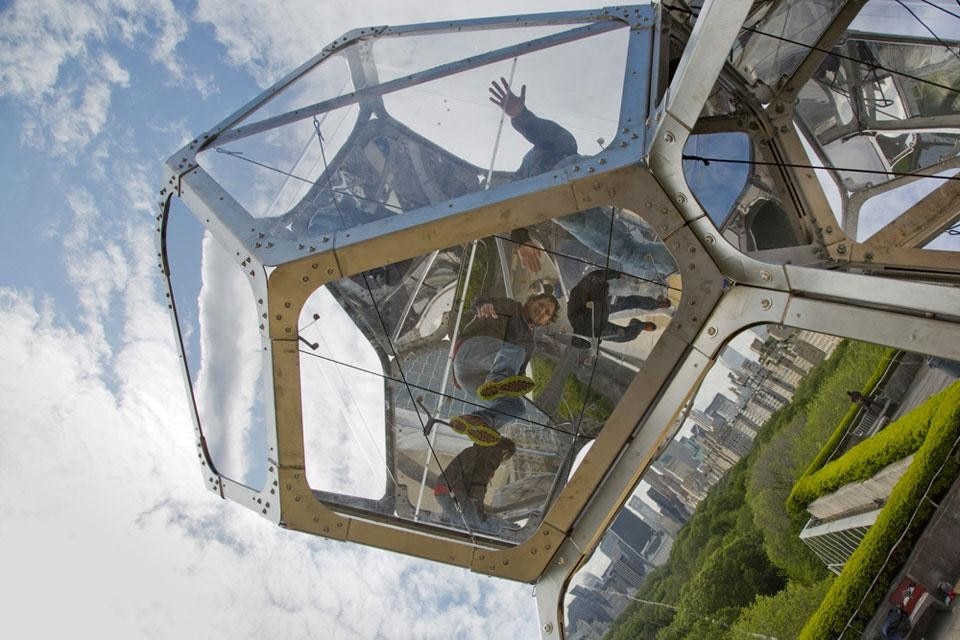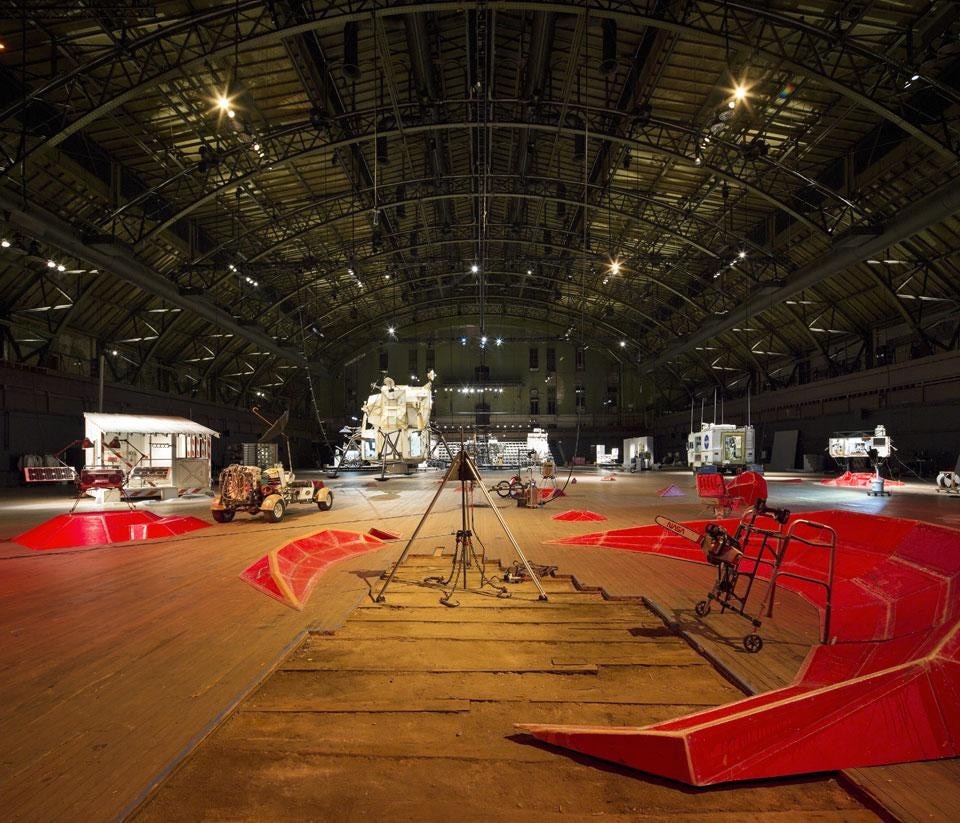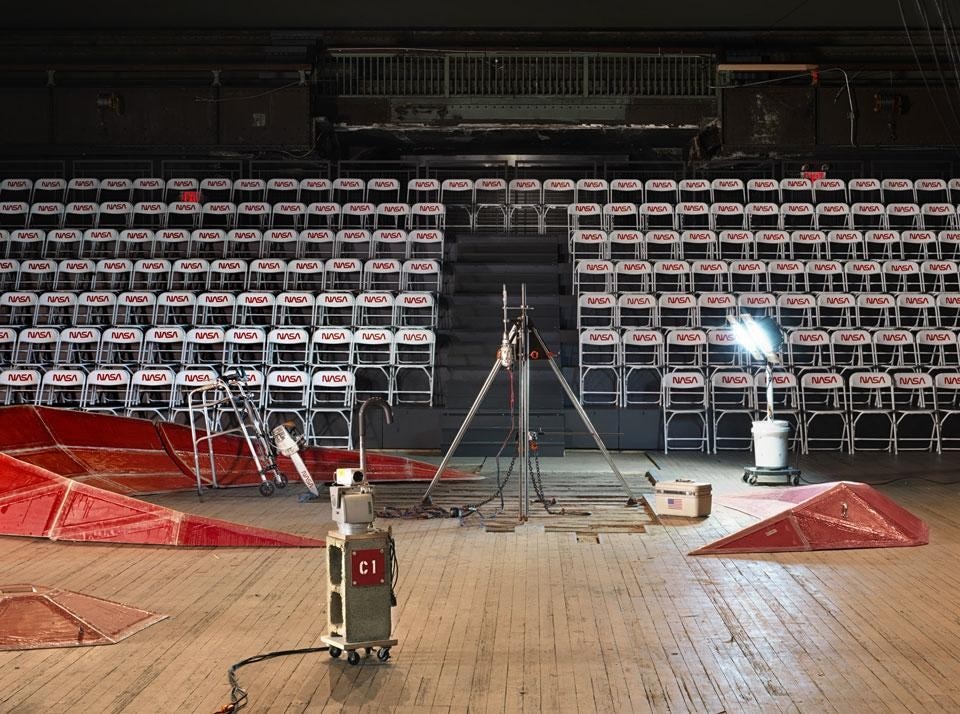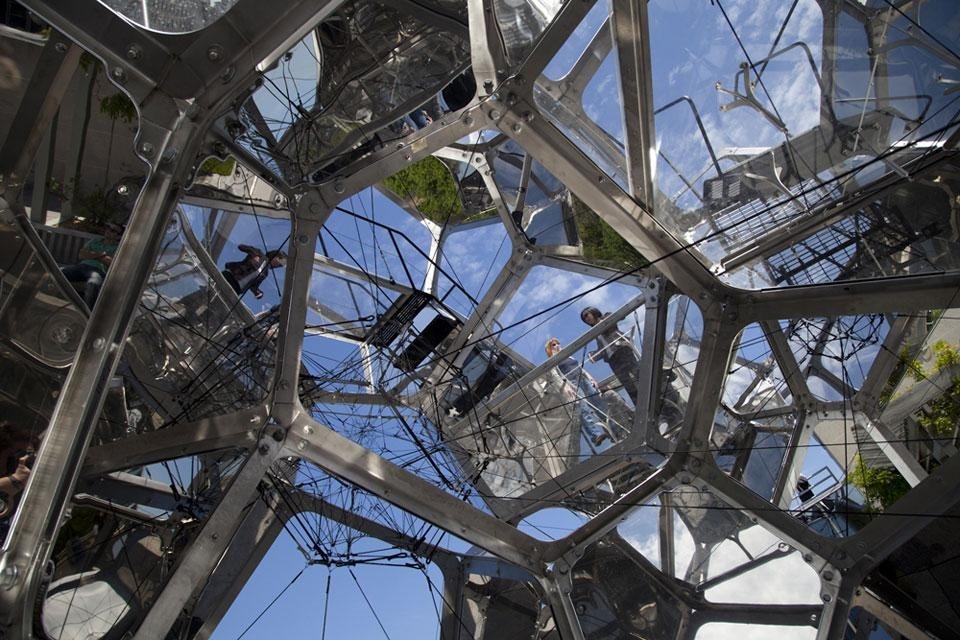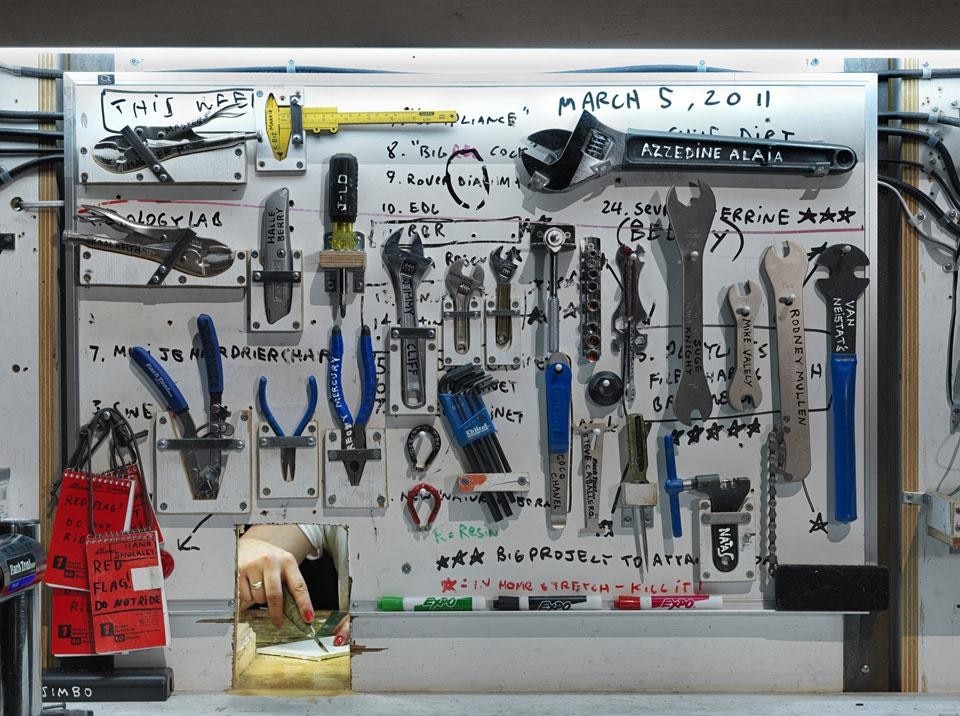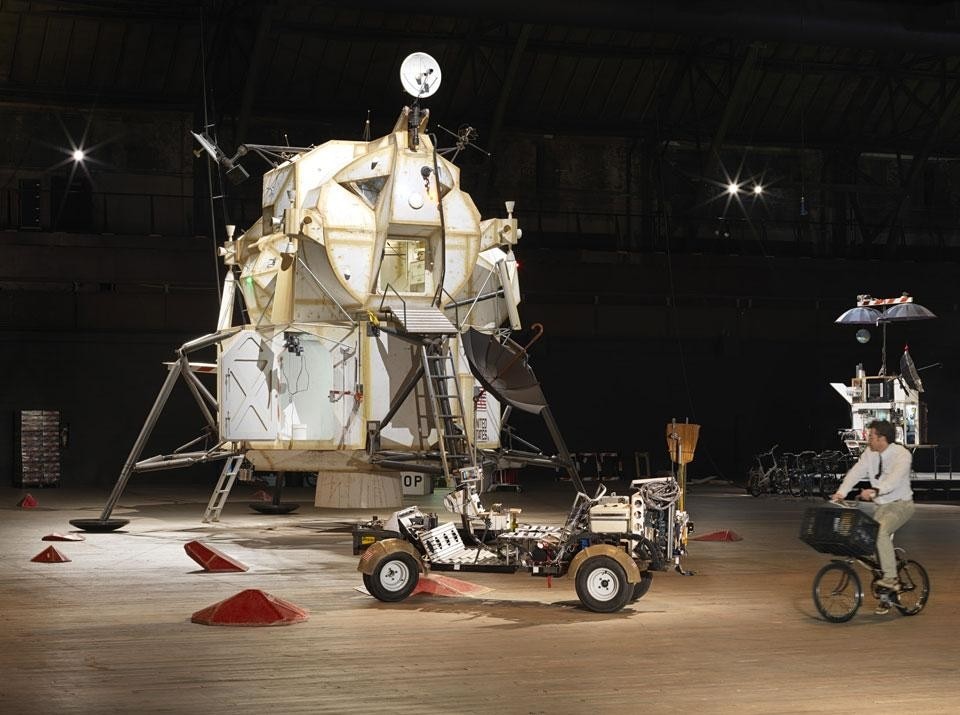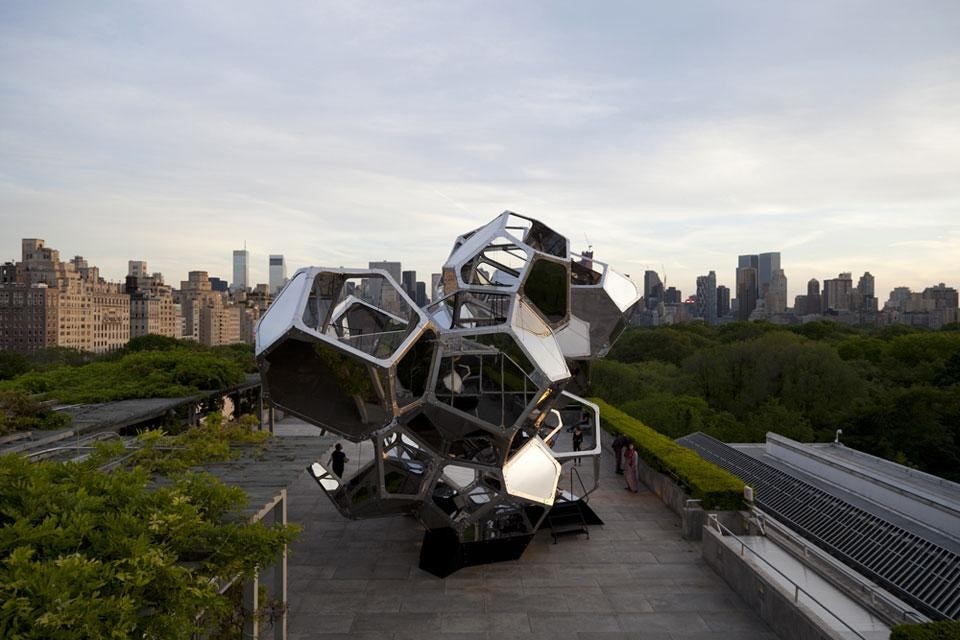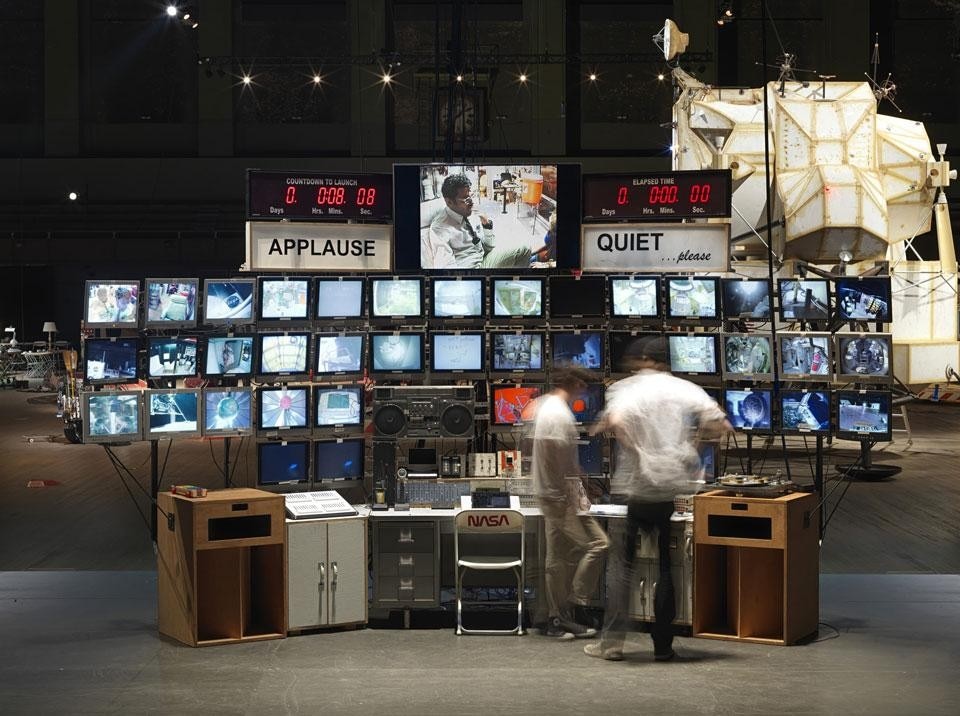Saraceno's insatiable curiosity is immediately apparent; the tick of the seconds and the click of his slides seemingly unable to keep up with the rapid fire pace of his thoughts. At the 31 May panel "Artist as Innovator: Visions of a Floating City," Saraceno seems at ease amidst an a-list astrophysicist, an astrobiologist, an arachnologist and an architect. Here, his affinity for Buckminster Fuller comes as no surprise: trained as an architect, Saraceno's art dips freely into chemistry, biology, physics and engineering. His inspirations are equally varied: bacteria, neural networks, bubbles, spider webs, the cosmos.
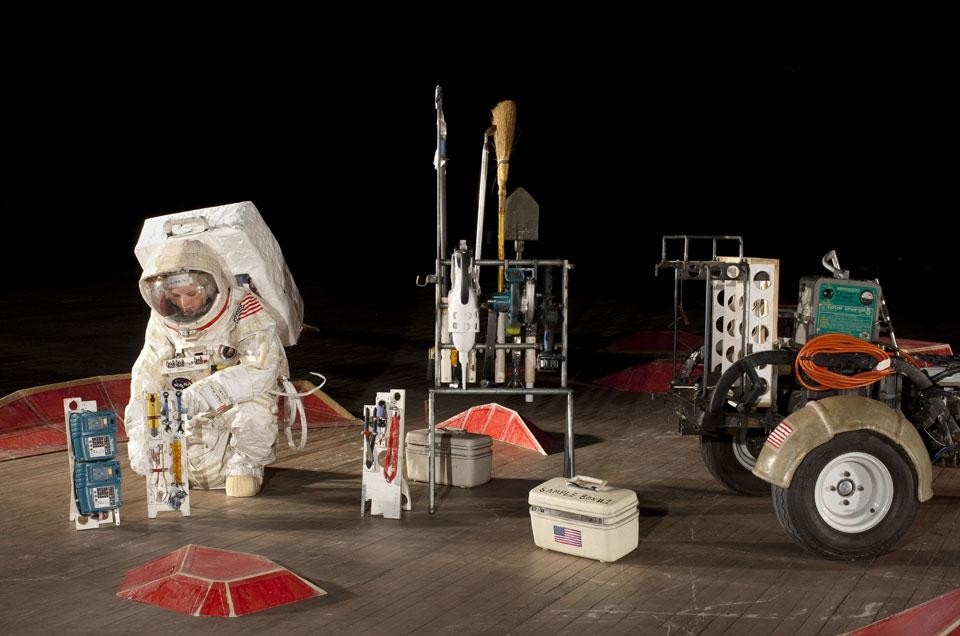
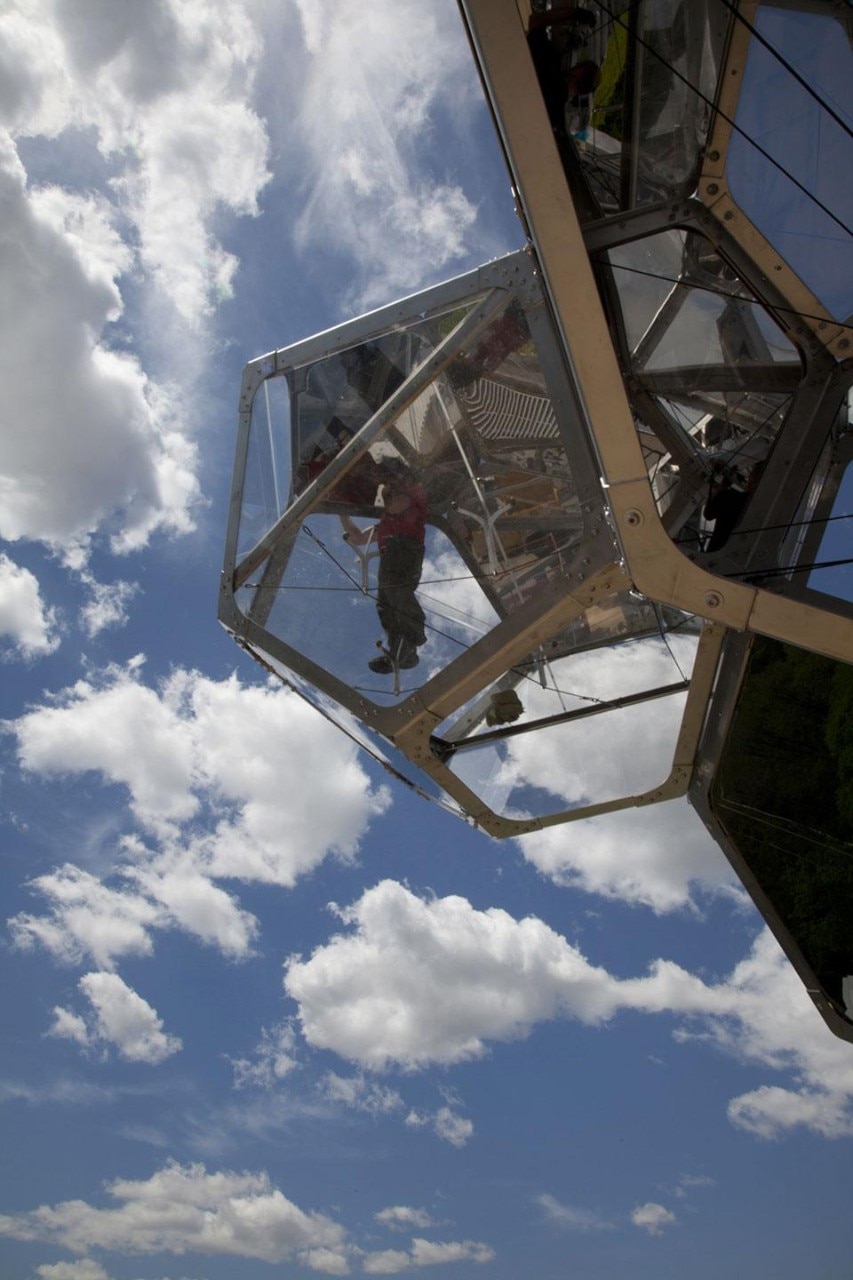
Despite its shortcomings, there is an undeniable beauty to Saraceno's creation; its sense of hope in the unknown, the thrill of the search and the anticipation of discovery. "This story will end where it began, in the middle," writes theoretical physicist and author Jana Levin in A Madman Dreams of Turing Machines: "A triangle or a circle. A closed loop with three points. A wayfaring chronicle searching for a treasure buried in woods, on the streets, in books, on empty trains. Craving an amulet, a jewel, a reason, a purpose, a truth. I can almost see it on the periphery, just where they said it would be, glistening at me from the far edges of every angle I search."
As the swelter of summer descends, we long to escape: to the air-conditioned darkness of the movie theater, to the pool, the lake, to wide open space, to outer space
